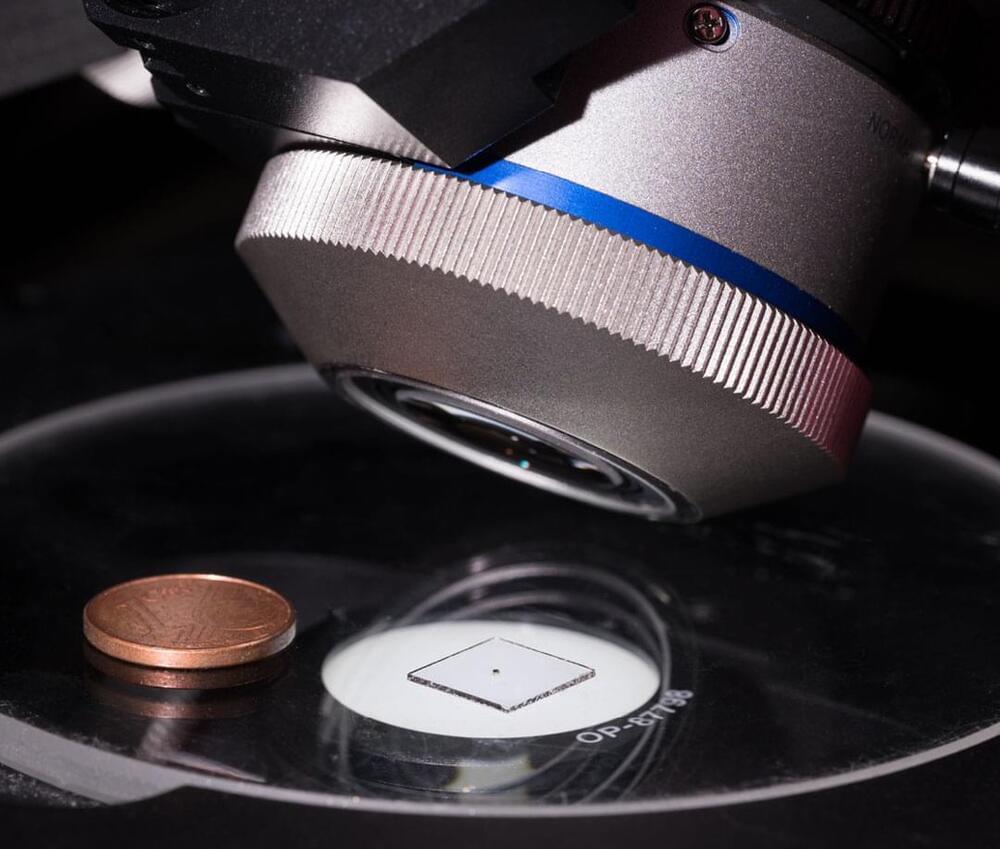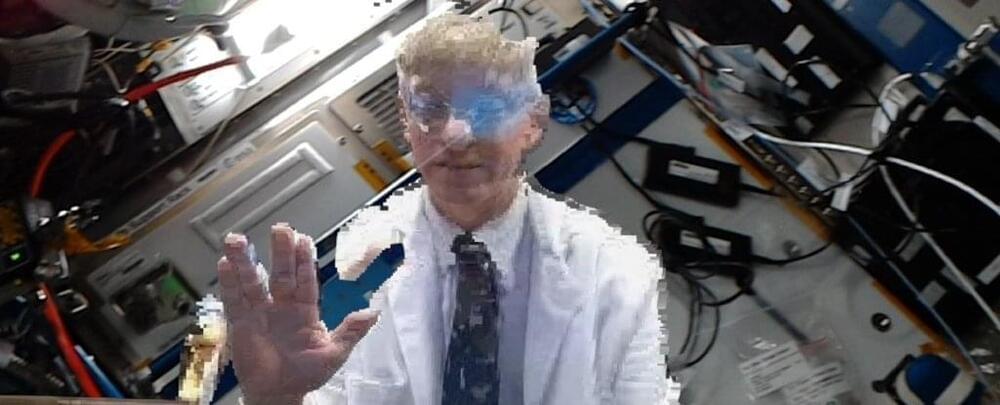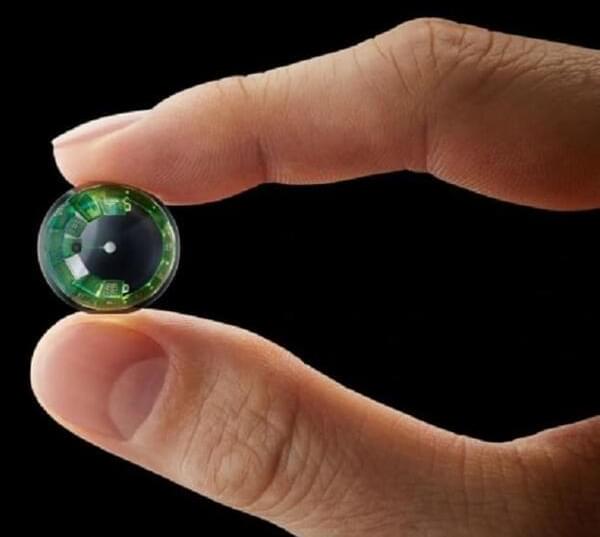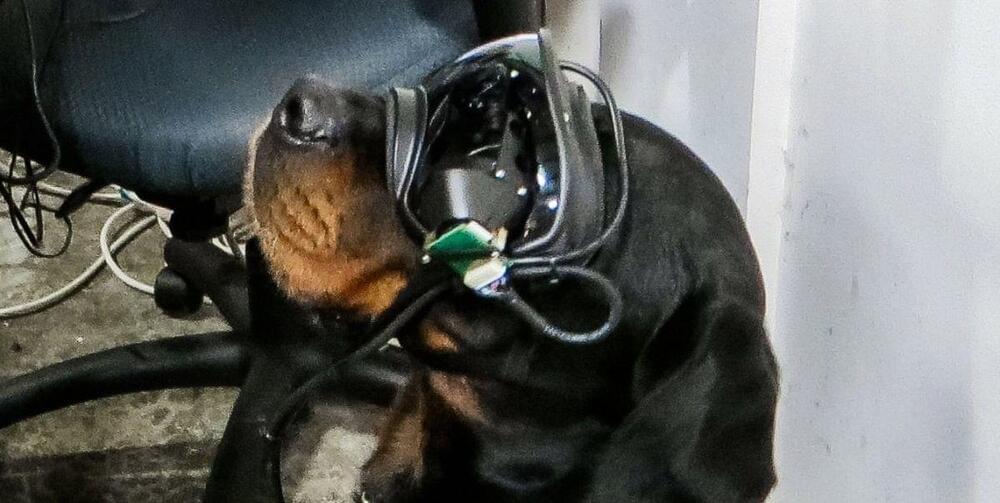Researchers have developed a new way to apply antireflective (AR) coatings to 3D printed multi-lens systems as small as 600 microns in diameter. Because these coatings help minimize light losses due to reflection, they are critical for making high-quality 3D printed systems consisting of multiple microlenses.
“Our new method will benefit any 3D printed complex optical system that uses multiple lenses,” said research team leader Harald Giessen from the University of Stuttgart in Germany. “However, it is especially useful for applications such as miniature fiber endoscopes, which require high-quality optics and are used for imaging under less-than-ideal lighting conditions.”
The researchers used a microscope to acquire tilted-view images of a 600-micron-diameter doublet lens system 3D printed on a 1×1 cm 2 glass slide. The doublet lens system is visible as the small dot in the center of the glass slide. The coin is included for scale. (Image: Moritz Flöss, University of Stuttgart)







